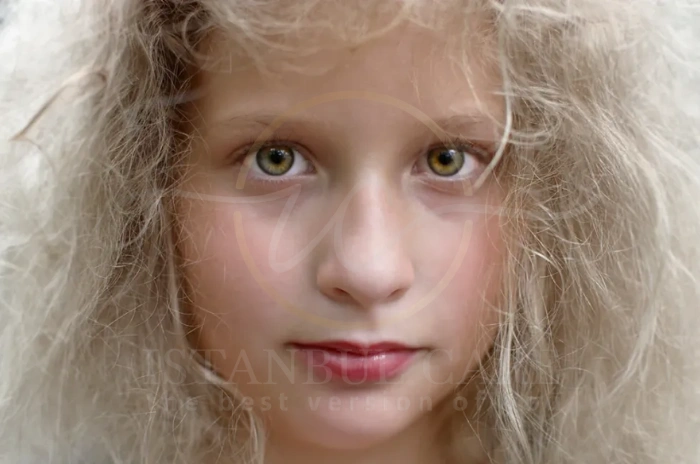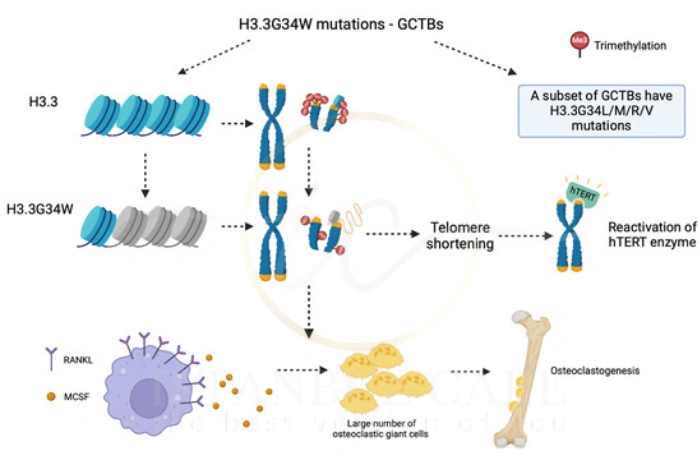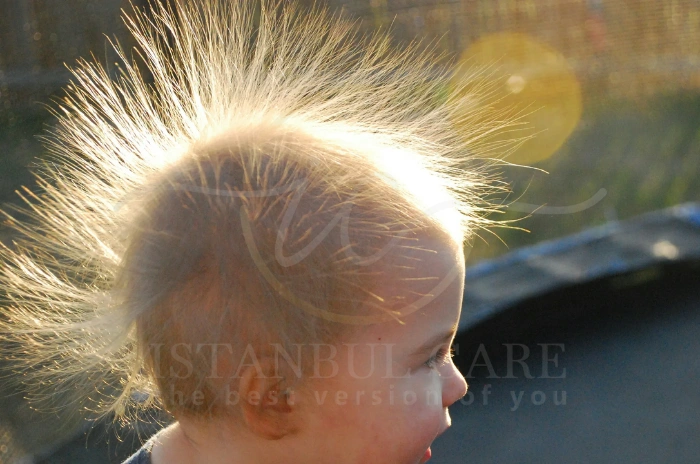Uncombable hair syndrome is a fascinating yet challenging condition that affects children worldwide, transforming their hair into an unmanageable, distinctive texture that resembles spun glass. This rare genetic disorder creates a unique appearance that can be both striking and concerning for parents who notice their child’s hair standing upright despite all grooming attempts.
The condition, also known as spun-glass hair or pili trianguli et canaliculi, represents one of nature’s most unusual hair disorders. Children with this condition develop hair that cannot be combed flat, no matter how much effort is applied. The hair takes on a silvery-blonde or straw-colored appearance that catches light in an almost ethereal way.
Understanding uncombable hair syndrome helps families navigate the emotional and practical challenges that come with this distinctive condition. While the hair may look concerning, the syndrome is generally harmless and often improves naturally as children mature into adolescence.

What Is Uncombable Hair Syndrome
Definition and other names
Uncombable hair syndrome (UHS) is a rare structural hair disorder characterized by hair that cannot be combed flat against the scalp. The medical community also refers to this condition as pili trianguli et canaliculi, which describes the triangular shape of the hair shaft when viewed under microscopic examination.
The condition earned its common name spun-glass hair due to the distinctive appearance and texture that resembles fine glass fibers. Other names include cheveux incoiffables and glass wool hair syndrome. Each name captures the unique quality of hair that stands upright and reflects light in an unusual manner.
This rare hair disorder affects the structural integrity of individual hair shafts, creating a distinctive appearance that sets affected children apart. The hair develops an unusual cross-sectional shape that prevents normal styling and creates the characteristic unmanageable texture.
How common is it
Uncombable hair syndrome affects fewer than one in a million people worldwide, making it an exceptionally rare condition. Medical literature has documented approximately 100 cases since the syndrome was first described in scientific journals.
The rare genetic hair condition appears to affect all ethnic groups equally, though it may be slightly more commonly reported in individuals of European descent. This could reflect reporting bias rather than true prevalence differences across populations.
Most documented cases involve sporadic occurrences within families, though some instances show clear inheritance patterns. The rarity of uncombable hair syndrome means many healthcare providers may never encounter a case during their entire careers.
Symptoms and Appearance in Childhood
| Characteristic | Description | Age of Onset |
|---|---|---|
| Hair Texture | Dry, frizzy, wiry (steel wool-like) | 3 months – 12 years |
| Hair Color | Silvery-blonde or straw-colored | Same as texture changes |
| Appearance | Cannot be combed flat, stands upright | Becomes noticeable when hair lengthens |
| Fragility | Breaks easily with forceful grooming | Present from onset |
Dry, frizzy and wiry hair
Children with uncombable hair syndrome develop distinctively dry, frizzy and wiry hair that feels coarse to the touch. The hair texture differs significantly from normal hair, often described as feeling like steel wool or fine wire brushes.
The structural hair abnormality creates hair that lacks the smooth, flexible quality of typical childhood hair. Parents often notice that standard hair products and conditioning treatments provide little improvement to the texture or manageability.
The hair tends to break easily when attempts are made to brush or comb it forcefully. This fragility, combined with the wiry texture, makes daily grooming routines challenging for both children and their caregivers.
Hair colour and texture traits
The most striking feature of uncombable hair syndrome is the distinctive silvery-blonde or straw-colored hair that appears almost luminescent under certain lighting conditions. This coloration typically develops regardless of the parents’ natural hair colors.
The spun glass hair texture creates an appearance where individual strands seem to catch and reflect light in unusual ways. The hair often appears to have an almost metallic sheen that distinguishes it from normal blonde hair variations.
Some children develop hair with slight golden or platinum undertones, but the overall effect remains that of frizzy silver-blond hair that stands away from the scalp. The color intensity may vary between individuals, but the characteristic silvery quality remains consistent.
When symptoms appear and improve
Childhood hair condition symptoms typically become noticeable between the ages of three months and twelve years, with most cases appearing before age three. Parents often first notice the unusual texture when attempting to style their child’s hair for the first time.
The hair shaft anomaly becomes more pronounced as the child grows and their hair lengthens. Initial soft baby hair gradually transforms into the characteristic unmanageable texture that defines the syndrome.
Many families report that the most challenging period occurs during the preschool years when social interactions increase and the distinctive appearance becomes more noticeable to others. The condition often creates practical challenges during this time.
When It Starts and Who It Affects
Typical onset in childhood
Uncombable hair syndrome typically manifests during early childhood hair disorder development, usually becoming apparent when a child’s hair reaches sufficient length to display the characteristic standing pattern. The onset rarely occurs before six months of age.
The transformation from normal infant hair to the distinctive unmanageable hair texture can be gradual or relatively sudden. Some parents notice changes over several months, while others observe the characteristic appearance developing within weeks.
Early signs include increased difficulty in combing or brushing the hair, along with a tendency for the hair to stand upright despite attempts to smooth it down. The texture gradually becomes more pronounced as the child ages.
How rare it is
Medical professionals classify uncombable hair syndrome among the rarest of all inherited hair conditions, with documented cases representing an extremely small fraction of the global population. The condition’s rarity means most people will never encounter someone affected by it.
Research institutions maintain registries of confirmed cases to better understand the syndrome’s characteristics and development patterns. These databases help medical professionals recognize the condition and provide appropriate guidance to affected families.
The rare structural hair disorder occurs so infrequently that many dermatologists and pediatricians may only read about it in medical literature rather than observing it in clinical practice. This rarity can sometimes lead to delayed diagnosis or misidentification.

Genetic Causes of UHS
| Gene | Protein Product | Function | Effect of Mutation |
|---|---|---|---|
| TCHH | Trichohyalin | Structural framework for hair shaft | Abnormally shaped hair shafts |
| TGM3 | Transglutaminase 3 | Cross-linking proteins during hair formation | Disrupted protein bonding, triangular cross-section |
| PADI3 | Peptidylarginine deiminase 3 | Protein modification via citrullination | Failed protein modification, spun-glass texture |
Role of TCHH gene defects
The TCHH gene plays a crucial role in producing trichohyalin, a protein essential for proper hair shaft formation and structure. Mutations in this gene represent one of the primary genetic causes of uncombable hair syndrome.
When the TCHH gene functions normally, it helps create the structural framework that gives hair its strength and flexibility. Defects in this gene disrupt the normal protein production process, leading to the formation of abnormally shaped hair shafts.
Research has identified specific mutations within the TCHH gene that correlate with the development of genetic hair conditions like uncombable hair syndrome. These mutations affect the gene’s ability to produce functional trichohyalin protein.
TGM3 gene and enzyme loss
The TGM3 gene produces transglutaminase 3, an enzyme critical for cross-linking proteins during hair formation. Mutations in this gene can result in uncombable hair syndrome by disrupting normal hair shaft development processes.
When the TGM3 gene malfunctions, the resulting enzyme deficiency prevents proper protein bonding within developing hair strands. This leads to the formation of hair with abnormal structural properties and the characteristic triangular cross-section.
Studies have shown that individuals with TGM3 gene mutations often develop the most severe forms of frizzy unmanageable hair childhood presentation. The enzyme’s absence creates fundamental structural weaknesses in the hair shaft architecture.
PADI3 gene and hair modification
PADI3 gene mutation affects the production of peptidylarginine deiminase 3, an enzyme responsible for modifying proteins during hair formation. This gene represents the third major genetic pathway leading to uncombable hair syndrome.
The PADI3 gene normally helps modify hair proteins through a process called citrullination, which is essential for proper hair shaft structure. When mutations occur, this modification process fails, resulting in abnormally formed hair.
Research into PADI3 gene function has revealed its importance in creating the smooth, flexible texture characteristic of normal hair. Defects in this gene contribute to the development of the distinctive spun glass hair texture seen in affected individuals.
How Is UHS Diagnosed
Clinical observation and signs
Diagnosis of uncombable hair syndrome begins with careful clinical observation of the hair’s distinctive characteristics. Medical professionals look for the classic triad of dry, frizzy hair that cannot be combed flat and has a silvery or straw-colored appearance.
The diagnosis electron microscopy process involves examining hair samples under specialized equipment to identify the characteristic triangular or kidney-shaped cross-section of affected hair shafts. This microscopic analysis provides definitive confirmation of the syndrome.
Healthcare providers also assess the hair’s response to standard grooming attempts and document the family history of similar hair conditions. The distinctive appearance and behavior of the hair usually make clinical recognition relatively straightforward for experienced practitioners.
Role of scanning electron microscopy
Scanning electron microscopy provides the most definitive method for confirming uncombable hair syndrome diagnosis. This specialized imaging technique reveals the distinctive triangular or flattened cross-section that characterizes affected hair shafts.
Under electron microscopic examination, normal hair appears circular in cross-section, while hair affected by uncombable hair syndrome shows the characteristic triangular shape with longitudinal grooves. These structural abnormalities explain the hair’s unique optical and physical properties.
The microscopic analysis also helps distinguish uncombable hair syndrome from other hair shaft abnormalities that might produce similar clinical appearances. This detailed examination ensures accurate diagnosis and appropriate management planning.
Differential diagnosis with other hair syndromes
Medical professionals must distinguish uncombable hair syndrome from other conditions that cause frizzy unmanageable hair childhood presentations. Conditions like woolly hair syndrome and loose anagen syndrome can sometimes appear similar to untrained observers.
The diagnostic process involves comparing the specific characteristics of the hair texture, color, and microscopic structure. Uncombable hair syndrome has distinct features that differentiate it from other genetic hair conditions when properly evaluated.
Healthcare providers also consider the age of onset, family history, and associated symptoms when making the differential diagnosis. The unique combination of features in uncombable hair syndrome typically allows for confident identification when all factors are considered.

Diagnosis and Treatment Options
How Doctors Diagnose Uncombable Hair Syndrome
Medical professionals diagnose uncombable hair syndrome through a combination of clinical examination and specialized testing procedures. The diagnostic process typically begins when parents bring their child to a healthcare provider concerned about their hair’s unusual appearance and texture.
Doctors first perform a thorough physical examination, paying close attention to the hair’s characteristics and growth patterns. They assess whether the hair demonstrates the classic signs of uncombable hair syndrome: the inability to lie flat, the distinctive silvery or straw-colored appearance, and the characteristic wiry texture.
The definitive diagnosis requires microscopic analysis of hair samples using electron microscopy. This examination reveals the distinctive triangular cross-section of hair shafts that confirms the presence of structural hair abnormality associated with the syndrome.
Can Uncombable Hair Be Treated or Managed?
Currently, there is no specific cure or treatment that can permanently correct uncombable hair syndrome. The condition results from fundamental genetic alterations that affect hair structure at the molecular level, making it impossible to reverse through conventional therapies.
Management focuses on gentle hair care practices that minimize damage and breakage while accepting the hair’s natural limitations. Harsh chemical treatments, excessive heat styling, and aggressive brushing can worsen the hair’s condition and should be avoided.
Some families find that certain conditioning treatments and gentle styling products can slightly improve the hair’s appearance and manageability, though the fundamental characteristics of spun-glass hair remain unchanged. The goal is comfort and protection rather than transformation.
Prognosis and Natural Improvement
Hair texture changes with age
Many children with uncombable hair syndrome experience gradual improvement in their hair texture as they progress through childhood and into adolescence. The hair often becomes more manageable and may develop a more normal appearance over time.
The improvement typically occurs gradually, with some children noticing changes as early as age five or six, while others may not see significant improvement until their teenage years. The rate and extent of improvement varies considerably between individuals.
Research suggests that hormonal changes during puberty may contribute to the hair texture improvements observed in many patients. These natural developmental processes can alter hair structure and reduce the severity of the childhood hair condition.
Expected resolution by adolescence
Most individuals with uncombable hair syndrome find that their condition significantly improves or completely resolves by late adolescence or early adulthood. This natural improvement represents one of the most encouraging aspects of the syndrome.
The resolution process appears to be related to changes in hair follicle activity and structure that occur during the transition from childhood to adult hair growth patterns. These changes can restore more normal hair shaft formation and reduce the characteristic abnormalities.
While complete normalization doesn’t occur in every case, the vast majority of affected individuals develop much more manageable hair that can be styled conventionally by their late teens or early twenties.
Management and Prognosis
| Age Group | Hair Characteristics | Management Approach | Prognosis |
|---|---|---|---|
| Early Childhood (0-5 years) | Most severe symptoms, very unmanageable | Gentle care, protective styles | Gradual improvement expected |
| School Age (6-12 years) | Moderate symptoms, some improvement | Continue gentle care, consider styling aids | Continued gradual improvement |
| Adolescence (13-18 years) | Significant improvement in most cases | Normal hair care may become possible | Near-normal hair texture expected |
| Adulthood (18+ years) | Usually resolved or minimal symptoms | Conventional styling possible | Excellent long-term outlook |
Current Treatment Approaches
Management of uncombable hair syndrome focuses on protective hair care strategies rather than curative treatments. Healthcare providers typically recommend gentle handling techniques that minimize mechanical stress on the fragile hair shafts.
Current approaches emphasize the use of mild, moisturizing shampoos and avoiding harsh chemical treatments that could further damage the already fragile hair structure. Regular deep conditioning treatments may provide some benefit in improving the hair’s appearance and feel.
Some specialists recommend specific styling techniques that work with rather than against the hair’s natural tendency to stand upright. These methods can help create more acceptable hairstyles while protecting the hair from unnecessary damage.
Long-Term Outlook for Patients
The long-term prognosis for individuals with uncombable hair syndrome is generally excellent, with most people experiencing significant improvement as they mature. The condition rarely causes any health problems beyond the cosmetic and social challenges it may present.
Many adults who had uncombable hair syndrome as children report that their hair eventually developed relatively normal characteristics, allowing them to style it conventionally. This improvement often brings significant relief to families who have struggled with the condition.
The psychological impact of the condition during childhood may require attention, as the distinctive appearance can sometimes lead to social challenges. However, the temporary nature of the condition provides hope for affected families.
Living with Uncombable Hair Syndrome
Hair Care Tips for Uncombable Hair
Caring for hair affected by uncombable hair syndrome requires patience and specialized techniques that prioritize protection over styling. Gentle handling represents the most important principle in daily hair care routines for affected children.
Use wide-toothed combs or soft brushes designed for detangling, and always work from the ends of the hair toward the roots to minimize breakage. Wet hair is more fragile, so extra care must be taken during washing and immediately afterward.
Avoid heat styling tools, harsh chemical treatments, and tight hairstyles that could stress the already fragile hair structure. Instead, embrace styles that work with the hair’s natural texture and tendency to stand upright rather than fighting against it.
Does Uncombable Hair Improve with Age?
Uncombable hair syndrome typically shows gradual improvement as children grow older, with many individuals experiencing significant changes in their hair texture and manageability during adolescence. This natural improvement offers hope to families dealing with the condition.
The improvement process usually begins during the school-age years and continues through the teenage period. Some children notice their hair becoming easier to manage as early as age seven or eight, while others may not see changes until later in their teens.
While not every individual experiences complete resolution, the vast majority find that their hair becomes much more manageable and develops a more conventional appearance by early adulthood. This improvement often brings significant relief to families who have struggled with styling challenges.
Speak with our expert Hair Transplantation specialists

Speak with our expert Hair Transplantation specialists
We’re ready to answer your questions
FAQs for Uncombable Hair Syndrome Causes Symptoms and Treatment
Uncombable hair syndrome is an extremely rare genetic disorder affecting fewer than one in a million people worldwide, characterized by hair that cannot be combed flat and has a distinctive spun-glass appearance
The hair appears dry, frizzy, and wiry with a silvery-blonde or straw-colored appearance that stands upright despite grooming attempts and feels coarse like steel wool to the touch.
Uncombable hair syndrome results from mutations in three main genes: PADI3, TGM3, and TCHH, which are responsible for producing proteins essential for normal hair shaft formation and structure.
Doctors diagnose the condition through clinical examination of the hair’s distinctive characteristics combined with electron microscopy analysis that reveals the characteristic triangular cross-section of affected hair shafts.
Currently, there is no cure for uncombable hair syndrome, and management focuses on gentle hair care practices that minimize damage while protecting the fragile hair structure from further harm.
Use gentle, moisturizing products, avoid heat styling and harsh chemicals, employ wide-toothed combs, work from hair ends toward roots, and embrace styles that work with the hair’s natural upright tendency.
Most children with uncombable hair syndrome experience gradual improvement during childhood and adolescence, with many achieving near-normal hair texture by early adulthood due to natural developmental changes.
The condition typically becomes noticeable between three months and twelve years of age, affecting all ethnic groups equally with most cases appearing before age three when hair reaches sufficient length to display characteristic features.

